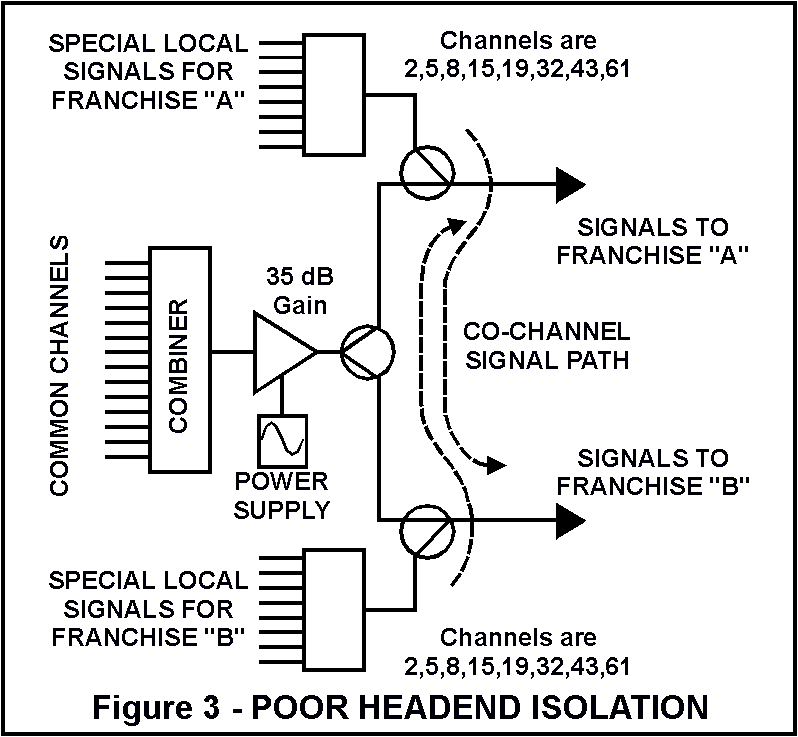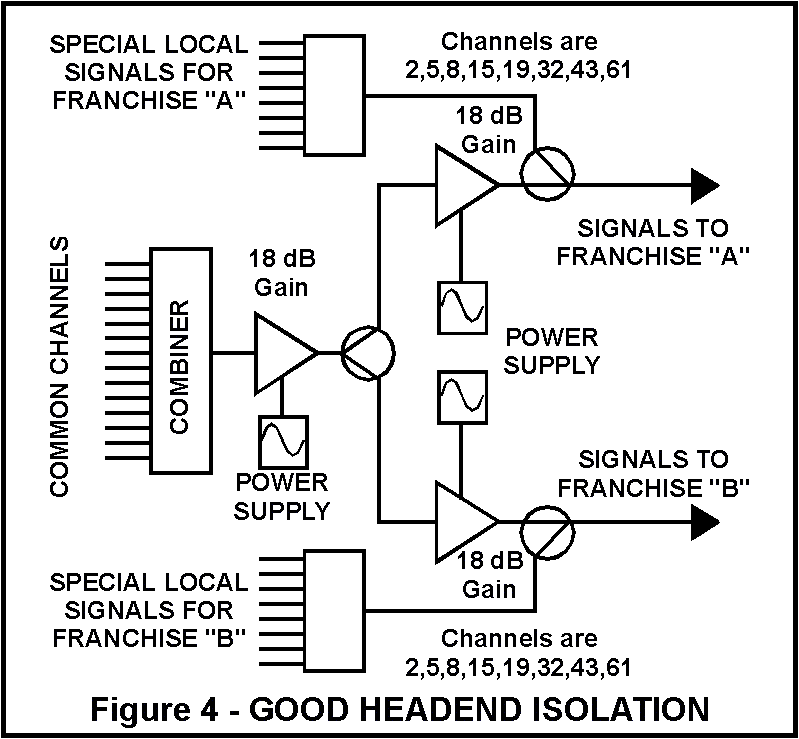| The headend is another place with applications for
low-gain single hybrid amplifiers. I get calls from cable operators with headend
combiner problems that can be resolved by a low-gain amplifier better than using a
high-gain amplifier. In headend applications, a low-gain, push-pull or power-doubled
amplifier with a built-in directional coupler at its output can eliminate cross-talk
co-channel problems and use less jumper cables. Channels that are common to all
franchise areas served from a single headend are split, then combined with the local area
specialty channels, government and local access, etc. Insufficient isolation of the
directional couplers and splitters can create a co-channel feedback path (figure 3).
The modulators which use the same channel frequencies on the various trunk outputs
to franchise areas will interfere with their corresponding channels in the other trunk or
fiber outputs. |
 |
 |
| Rather than have a single high gain, high performance
amplifier to drive through all the combiner losses, use several low-cost, low-gain
amplifiers strategically placed to optimize channel isolation and provide gain as well.
A single hybrid will typically provide reverse isolation equal to the forward gain
of the hybrid plus about 5 dB. This isolation combined with a good directional
coupler with 30 dB of "tap to output" isolation can provide more than 50 dB
total reduction in signal feedback paths. These types of isolation amplifiers can be
mounted on the side wall or rear of equipment racks without using front panel rack
segments. See figure 4 to verify the feedback paths and ways to improve the
isolation. (Since this article was published, the QRBA / QRCIA
family of buffer / isolation amplifiers were created to put up to 5 independent
amplifiers in a single 3.5-inch high rack-mount chassis.) |
| A quick thought about directional coupler isolation.
When testing any passive device for isolation, the typical RF bridge and
"good" terminator used in the test will have return loss of around -30 dB.
Most passives have return loss of -16 dB. Looking at the headend lash up
diagram shows that two or more passives are linked directly together or to amplifiers
which have return loss in the -16 / -20 db range. Using these lower range impedance
matched components, the true "operational" isolation desired may not be the 30
dB shown while testing with an RF bridge and precision terminator. With an active
hybrid amplifier providing the impedance match to the coupler, the isolation is real. |
| After 35+ years in the cable and satellite
communications business, I still hear some of the same questions about amplifiers quite a
bit. "How much gain do I need? Is power-doubling good
enough to keep down my CTB levels? More gain is better!
Right??" Wrong!
Use the correct amplifier for the job. |



